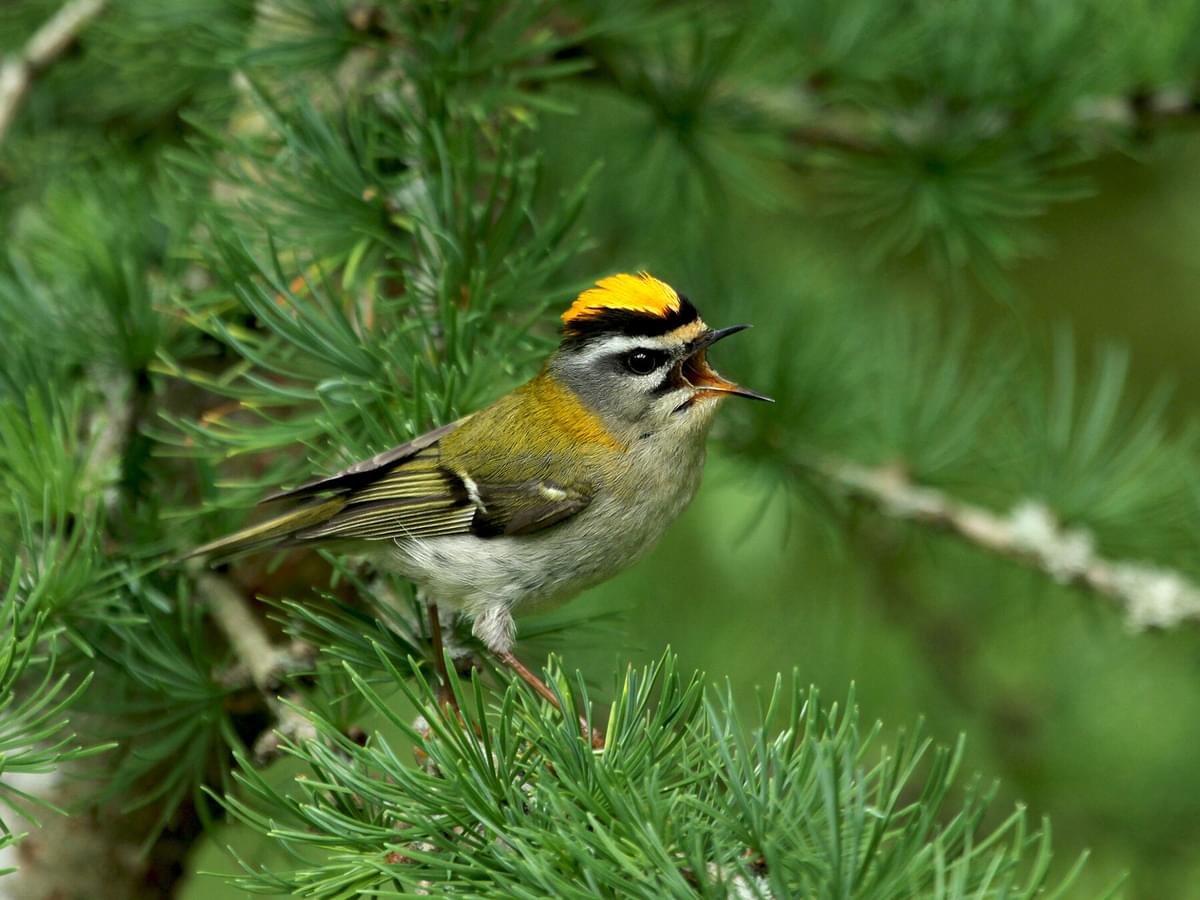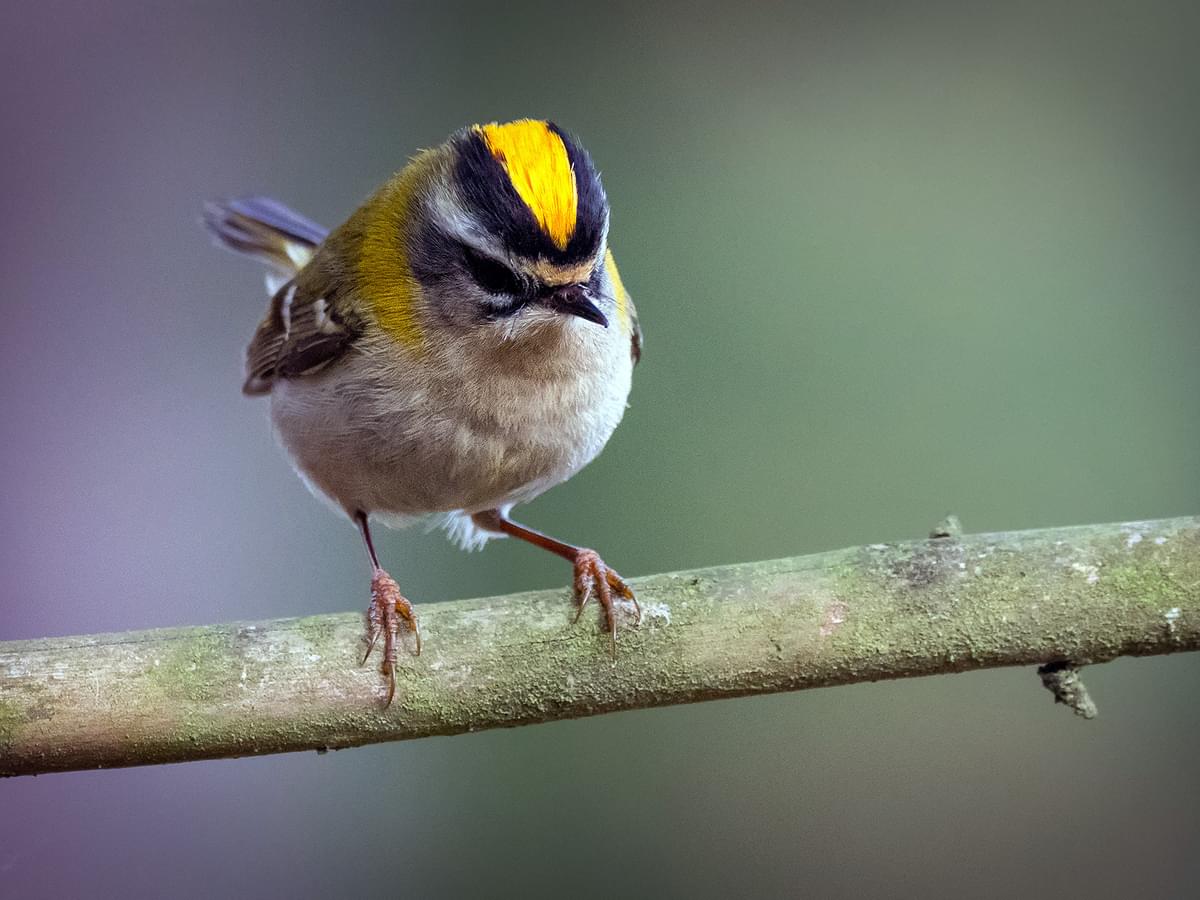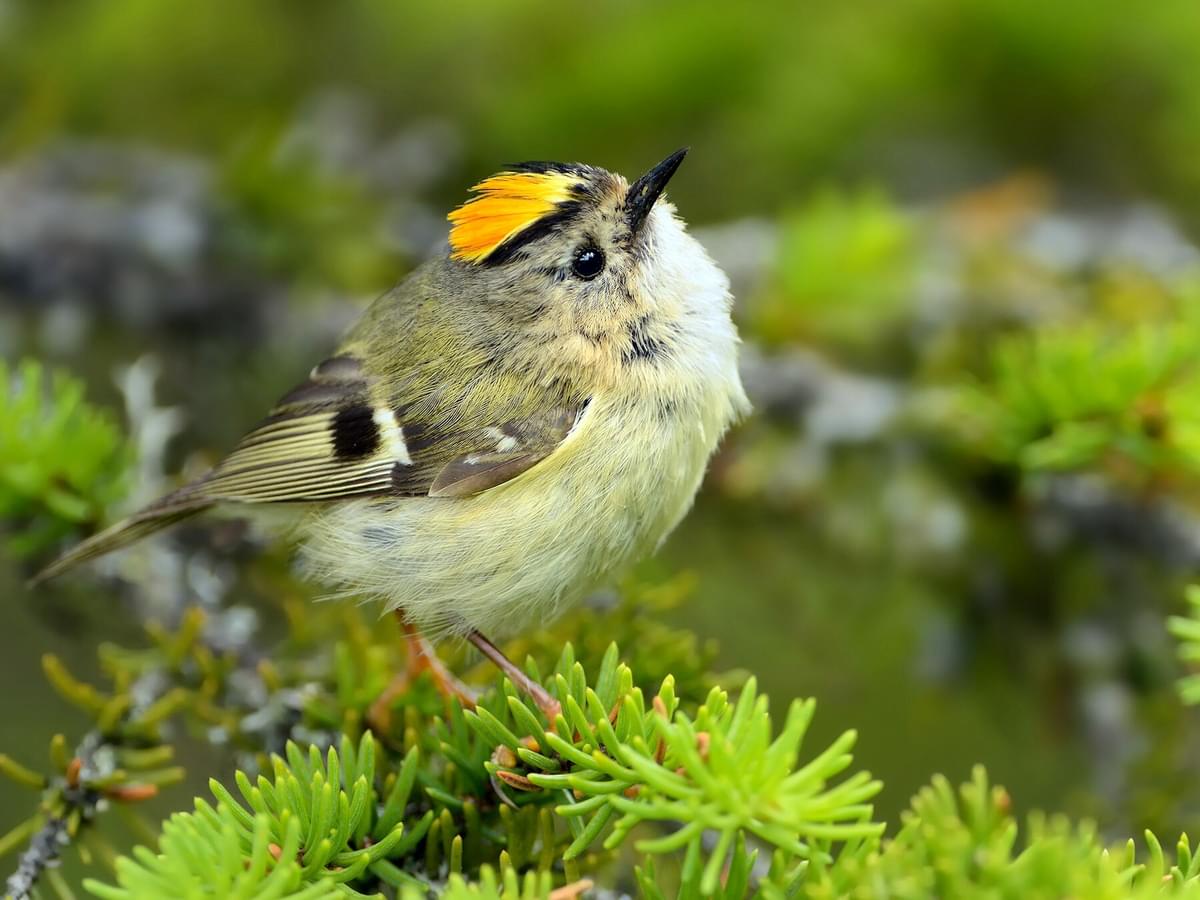Jump to Section
Goldcrest or Firecrest: Key Features Compared
Last updated: 18 December 2023

Goldcrests and Firecrests are similar birds, so identifying them can be difficult. In this guide, we'll highlight the main differences between both species to help you when it comes to telling them apart.
The main differences between the goldcrest and firecrest are their plumage, with goldcrests appearing duller compared to the more vibrant firecrest.
- Firecrests also have a bold white patch above their eyes (supercilium) and a strong black stripe through their eyes.
- Goldcrests have bright yellow stripes on the top of their heads, whereas firecrests have a vibrant orange stripe on the head, although female firecrests have a paler yellow colour.
There are more differences between the two, which we'll go into a little more detail below, but the above are generally the best way to tell the two apart.

Goldcrest

Firecrest
Comparison table
| Feature | Goldcrest | Firecrest |
|---|---|---|
| Size | Smaller; length about 9 cm (3.5 inches) | Slightly larger; length about 9-10 cm (3.5-4 inches) |
| Weight | Very light, typically around 5-7 grams | Slightly heavier, around 5-8 grams |
| Appearance | Olive-green upperparts and whitish underparts | Bright green upperparts, white underparts with strong face pattern |
| Prominent yellow stripe on the head, bordered by black | Bold black and white stripes on the face, orange crown stripe | |
| Song | High-pitched, thin “zee-zee-zee” | Louder and more varied than Goldcrest, “tee-tee-tee” |
| Habitat | Prefers coniferous forests and woodlands | Found in both coniferous and mixed woodlands |
| Distribution | Across Europe and into parts of Asia | Europe and North Africa; slightly less widespread than Goldcrest |
| Breeding | Nests in conifers, building a cup-shaped nest | Similar nesting habits, but also uses mixed woodland |
| Diet | Mainly feeds on small insects and spiders | Similar diet, includes small insects and spiders |
| Behaviour | Active, flitting through trees and shrubs | Very active, often in mixed flocks in non-breeding season |
| Conservation Status | Generally stable and widespread | Stable, but less common than Goldcrest in some areas |
| Identification Tips | Look for the vibrant gold stripe on the crown | Distinctive face pattern with black and white stripes |
| Smaller and less boldly marked than Firecrest | Orange in the crown stripe, more striking face markings |
Other differences
Goldcrests are the smaller of the two with an average length of 9cm. Firecrests are marginally bigger with an average length of 10cm.
Goldcrests eyes have white rings surrounding them and their backs are a mixture of a dulled down olive and grey with buff undersides. The tips of their wings are unmistakably white. They are more widespread out of the two species, and you're much more likely to see them in gardens and other habitats.
Firecrests have a black stripe that goes across their eyes and the wingtips are paler than the goldcrest, but their plumage is a lot more vibrant. The bold olive colouring is comparable to when someone turns up the saturation on something. Firecrests have more of an intimidating look about them because of the striking black strap across the eye.
Goldcrest
Regulus regulus

Length:
8.5cm to 9.5cm
Wingspan:
13cm to 15cm
Weight:
4.5g to 7g
Firecrest
Regulus ignicapilla

Length:
9cm to 10cm
Wingspan:
13cm to 16cm
Weight:
4g to 7g
Similarities between the two
They both tend to share much of the same habitats, primarily in coniferous woodland. They both have tiny beaks that allow them to pick tiny insects from between the pine needles.
When it gets colder during the winter, more commonly, goldcrests will venture into other habitats, including gardens, in search of food - you can often find them dangling from branches. Firecrests will also do the same but it's much rarer to see one in your garden.
As they are both small birds with (a weight of around 5g), they aren't as vulnerable to predation as other species of birds. This is because their tiny builds allow them to feed in places that can support the lightest of animals. They are also speedy, agile and easy to overlook because of their size, which also helps them escape predators.
Both birds calls and songs are similar with a collection of short high-pitched notes.




